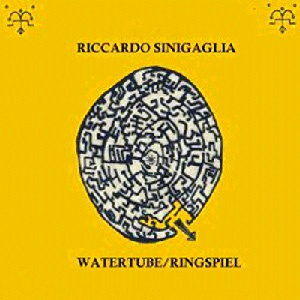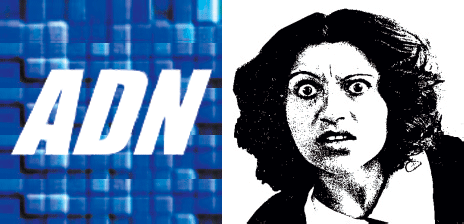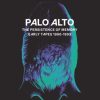Riccardo Sinigaglia – Watertube / Ringspiel
Riccardo Sinigaglia — Watertube / Ringspiel
(ADN no#, 1985/2015, CD)
by Peter Thelen, Exposè Published 2016-04-29

Originally released in 1985 as a cassette on the ADN Tapes label, this was Sinigaglia’s first solo release after having been a member of the experimental world music trio Futuro Antico. The two long tracks on this represent the experimental ideal that ADN was known for, many artists from around the world working on limited budgets producing music that was way outside the mainstream of any musical genres. Both of these pieces clock in at exactly 15:30, but are as different as day and night. “Watertube” presents an ambient exploration of sound, using synthesizers, prepared piano, taped and sampled sounds, and other mysterious instrumentation – including the presumed watertube, which appears about six minutes into the piece. It freely wanders through numerous paths, often the sounds seem as if they are looping over one another asynchronously, the piano and other percussives dueling with the pulsating sound of the tube and other mysteriously shimmering sounds that haunt the background. The chaos reaches its pinnacle around the ten minute mark and then gently subsides, recalling the keyboard sounds that started the journey. “Ringspiel” opens with the sounds of a toy musical box, gently giving way to keyboard sounds punctuated by percussives through a speed changing tape loop, followed by a somewhat haunting random melody driven by what sounds like an effected zither, with plenty of studio effects and soundloops rounding out the textural soundwall. Since no instrument credits are provided, one can only guess while analyzing how the sounds were made, or just skip the analysis and just kick back and enjoy wherever it takes you.
AMBIENT SOUNDSCAPE
Un altro holy grail dell’underground italiano torna alla luce. Ho cercato per anni senza fortuna la cassetta originale, uscita su ADN nel 1985, prima prova solista di Riccardo Sinigaglia dopo la parentesi Futuro Antico con Walter Maioli e Gabin Dabirè. Prima dunque dell’altrettanto mirabile “Riflessi” del 1986, uscito all’epoca in vinile su Auf Dem Nil, e del progetto collettivo Correnti Magnetiche, “Ambient Music” è già una prova d’intenti. Il termine, già codificato da Brian Eno qualche anno prima, viene qui rivoltato dal musicista, che a quel tempo lavorava con il nastro magnetico e le forbici erano uno strumento non meno importante per creare dei lunghi loop, che venivano tesi alla giusta distanza prima di passare alla registrazione su un quattro tracce Teac 3340, passando anche da un equalizzatore parametrico e mixando infine sul Revox, la vera macchina da sogno e stato dell’arte del periodo. Oppure portava il loop sul Sony portatile a nastro, con il variatore di velocità che gli permetteva di ottenere così sfasamenti di velocità progressive, con differenti intonazioni. Tutto era molto artigianale naturalmente, ma è proprio in virtù di questo che oggi possiamo apprezzare suoni unici. In due sole peraltro brevi tracce, si dispiega l’arte dell’essenzialità di Riccardo Sinigaglia. In Watertube usava dei suoni prodotti con un lungo tubo di plastica dove all’estremità aveva inserito un piccolo microfono Sennheiser che prendeva il colore tonale del tubo, facendo con la bocca quei particolari suoni acquatici che si ascoltano nell’arco dei 16 minuti. Nello studio c’erano però anche il piano Fender Rhodes, il synthi EMS e il glorioso organo Farfisa, strumenti elettivi del musicista. Il secondo lato è occupato da Ringspiel che si apre con un semplice accordo di base creato col pianoforte e strumenti giocattolo, su cui poi con la solita tecnica del taglia e cuci alla maniera della musique concréte, ha tagliato la testa del suono, lasciando solo la coda, poi vi ha attaccato lo stesso accordo rovesciato per creare un continuum e vi ha innestato la corda libera di una chitarra suonata da Paolo Caliari, mettendola in loop col variatore di velocità. Al di là della tecnica artigianale, ai nostri orecchi il suono giunge quieto e disteso, come una sequenza di frammenti pulsanti. Di Eno, Sinigaglia sembrava così cogliere la semplice idea delle Strategie Oblique e la lenta evoluzione dell’Ambient; del minimalismo, la ripetitività del continuum; del quarto mondo Hasselliano, la sintesi di elettronica e primitivismo magico, lasciando decantare dentro il proprio universo sonoro, l’infinita bellezza di quei mondi.
(8)
Gino Dal Soler – Blow Up



